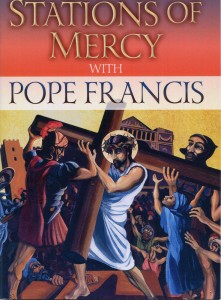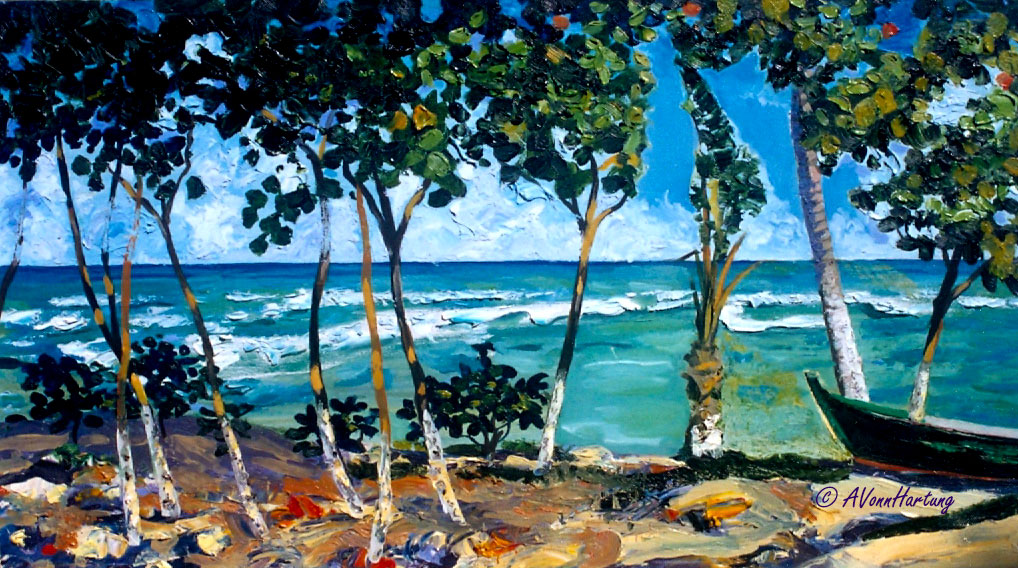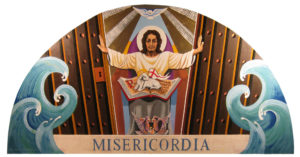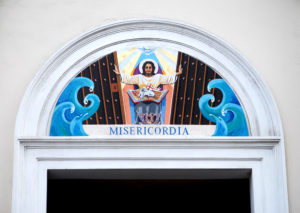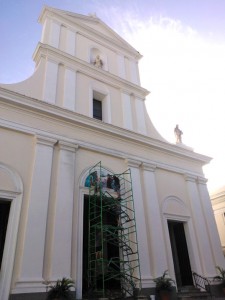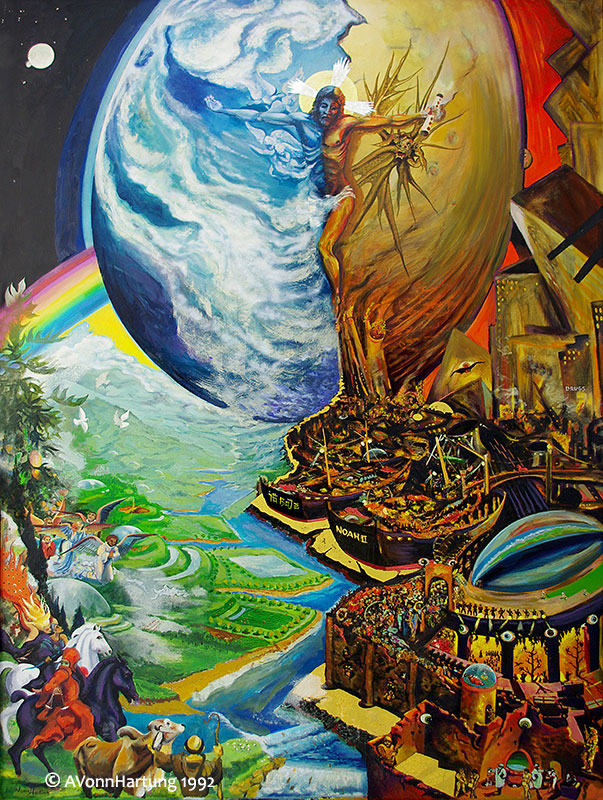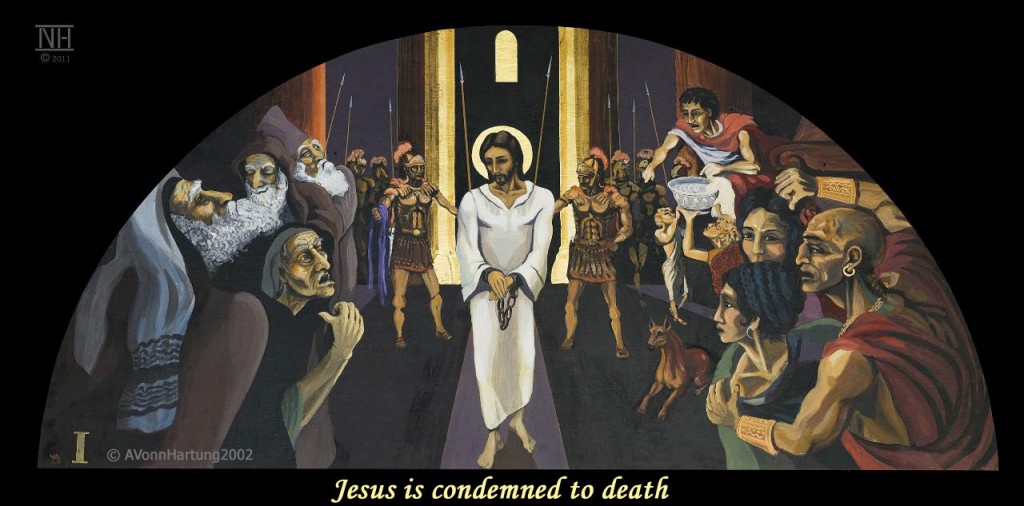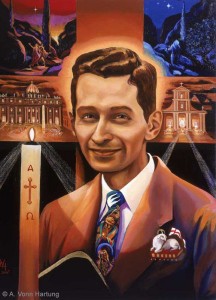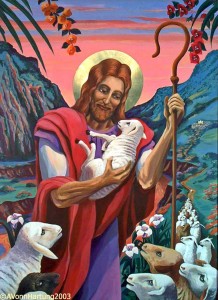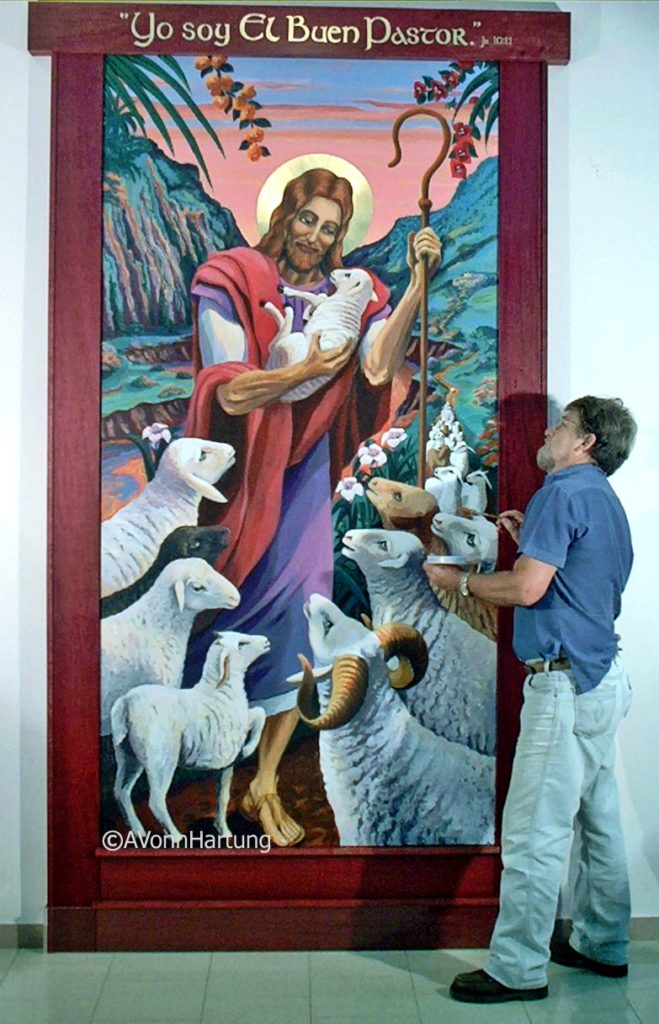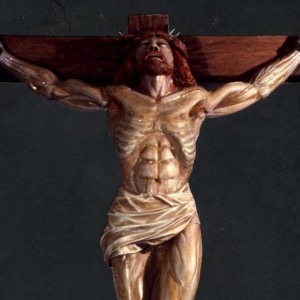THESE STATIONS OF THE CROSS paintings show the process of conversion as Jesus was put to the test and tormented. Indeed, his persecutors came to understand who he was.
[Spanish translation follows]
Accordingly, the stations express a perspective that emphasizes the effect Jesus had on those present during his ordeal of carrying his own cross to his crucifixion on Calvary. Specifically, as the bystanders are pulled into his suffering we follow by observing closely, the actual Revelatory conversion of the principal Roman soldier. Moreover, we see how the outpouring of grief and compassion of others around him begin to melt away his own cruelty and indifference.
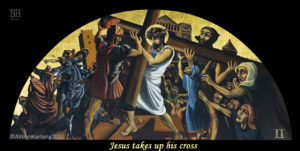
See how he marvels at the deep and complete faith of Veronica as she wipes the face of our Lord. Furthermore, others also are going through the steps of conversion from confusion and despair to an awakening clarity. Significantly, we see this most clearly in the others behind Veronica.
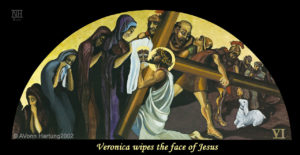
Thus we understand how the soldier at the foot of the cross could finally come to the realization that they had indeed crucified “The Son of God”. (Mk 15:39)
About the paintings
The artist painted these Stations of the Cross for Santa Rosa de Lima Church in Guaynabo (Barrio Amelia), Puerto Rico. In fact, he conceived them with the community in mind. Moreover they include much of the spiritual and cultural qualities of Puerto Rico. Each Station measures 4-ft by 8-ft, painted in acrylic and gilded in copper and gold. They surround and crown the nave of the church.
Read More about these paintings
View contemplative video of these Stations of the Cross
See video The Passion of our Lord
Ver video La Pasión de nuestro Señor
Commissioned by Padre Antonio “Tito” José Vázquez
Photos by Greger Norrevik
Las pinturas de estas ESTACIONES DE LA CRUZ muestran el proceso de conversión cuando Jesús fue puesto a prueba y atormentado. Sus perseguidores llegaron a comprender quién era.
De hecho, las estaciones expresan una perspectiva que hace hincapié en el efecto que Jesús tuvo en los presentes durante su terrible experiencia de llevar su propia cruz a su crucifixión en el Calvario. A medida que los transeúntes son arrastrados a su sufrimiento, seguimos observando de cerca la conversión Revelatoria real del principal soldado romano. Vemos cómo el torrente de dolor y compasión de los que le rodean comienzan a disipar su propia crueldad e indiferencia.

Vea cómo se maravilla de la fe profunda y completa de Verónica mientras limpia el rostro de nuestro Señor. Otros también están pasando por los pasos de conversión de la confusión y la desesperación a una claridad que despierta, como se ve más visiblemente en los otros detrás de Verónica.

Así entendemos cómo el soldado al pie de la cruz pudo finalmente darse cuenta de que habían crucificado al “Hijo de Dios”. (Marcos 15:39)
Acerca de las pinturas
Estas Estaciones de la Cruz fueron pintadas para la Iglesia Santa Rosa de Lima en Guaynabo (Barrio Amelia), Puerto Rico. El artista los concibió con la comunidad en mente e incluyen gran parte de las cualidades espirituales y culturales de Puerto Rico. Cada estación mide 4 pies por 8 pies, pintada en acrílico y dorada en cobre y oro. Se rodean y coronan la nave de la iglesia.
Leer más acerca de estas pinturas
Ver videos contemplativos—
Stations of the Cross
The Passion of our Lord
La Pasión de nuestro Señor
Encargo del Padre Antonio “Tito” José Vázquez
Fotos por Greger Norrevik
